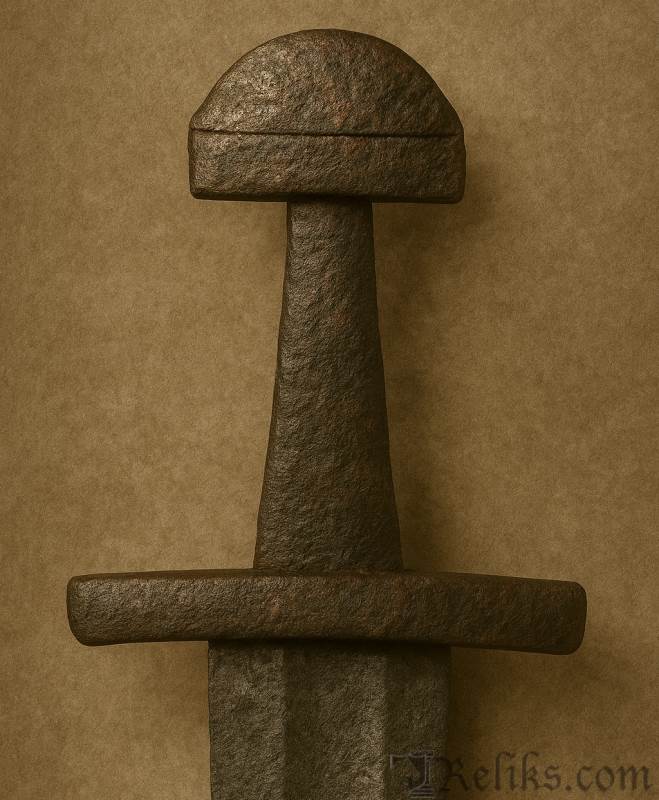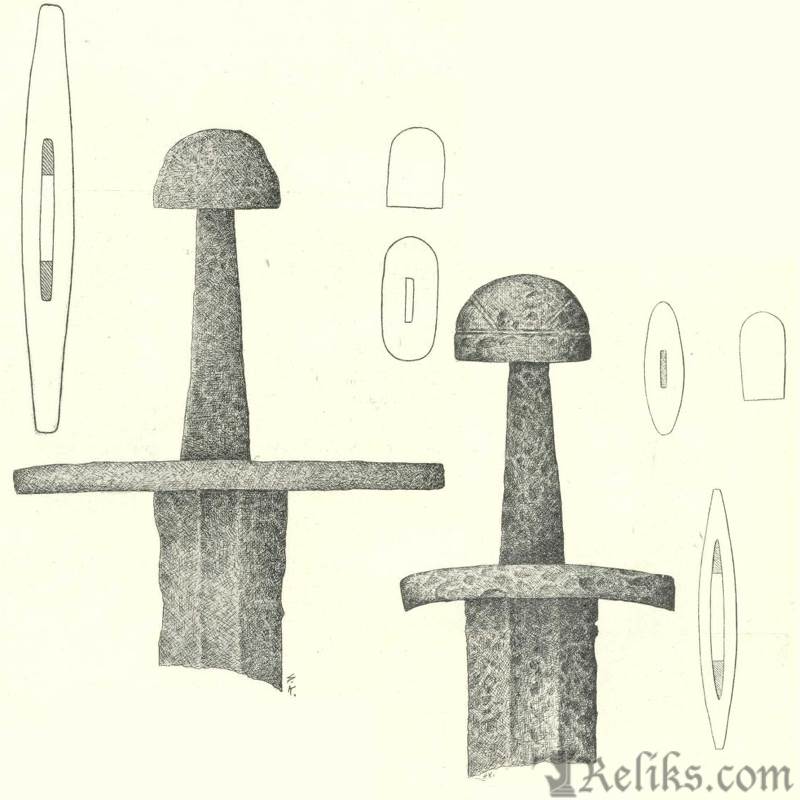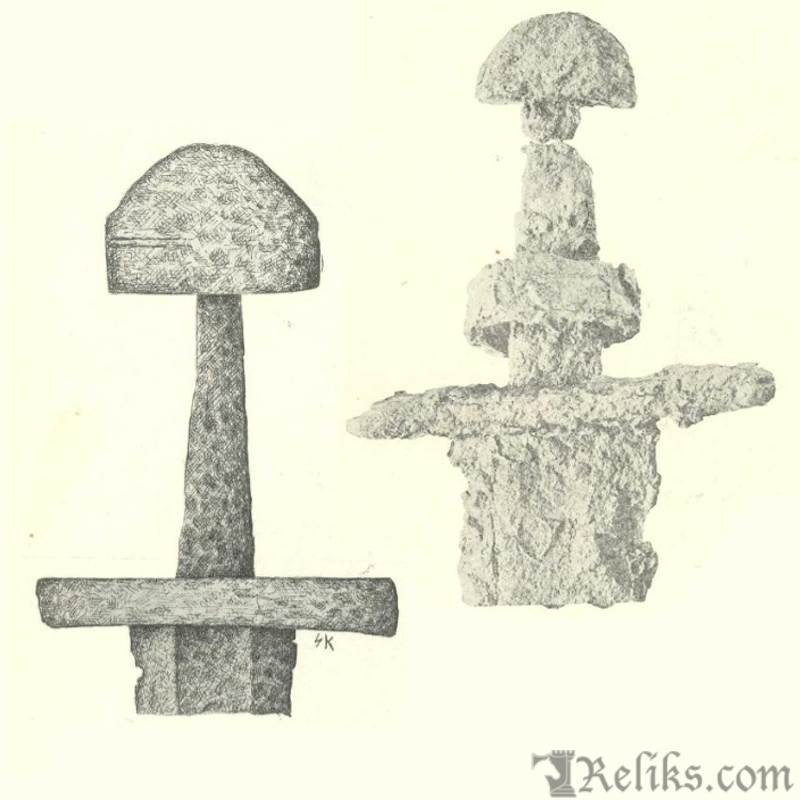Viking Sword Type X – The Half-Circle Pommel Workhorse (c. 900–1050)
A Sword for the Changing Age
By the 10th century, the Viking world was in transition. Raids had given way to settlements, kingdoms were consolidating, and the armies of Europe were evolving into something larger and more organized. Against this backdrop, one sword type rose to near ubiquity: the Type X. Instantly recognizable by its low, half-circle “button” pommel and often long, plain guard, it was the workhorse weapon of the late Viking Age. If earlier types spoke of aristocratic showmanship, silver inlays, and exotic imports, the Type X marked a shift toward practical, streamlined designs that could be forged in large numbers and carried across the breadth of Europe.
Anatomy of the Hilt

The Late Viking “Half-Round Pommel” Sword
The hallmark of Type X is its single-piece upper fitting. Instead of a separate pommel cap riveted to the guard, the smith created a unified half-round block that capped the tang. Some examples even have faint grooves cut into the metal, as if to imitate the older joint between pommel and guard that was no longer structurally needed.
Two flavors of Type X are recognized:
- Early variant (rare): higher, slimmer cap, with a slightly bowed lower guard.
- Later variant (common): lower and chunkier cap, paired with very broad, often exceptionally long lower guards (up to nearly 18 cm). These later guards foreshadow the stretched silhouettes of early medieval swords.
Decoration is almost absent. Where earlier types shimmered with silver bands, Type X generally kept its surfaces plain. A few carry incised lines or thin vettrim bands, but the emphasis was on durability, not display.
Blades for Battle

Petersen (fig.124-125)
The vast majority of Type X blades are double-edged, though two West Norwegian examples are single-edged, unusually thin, and broad. By the later 10th century, these blades often feature narrow, deep central fullers—an innovation that would define medieval arming swords of the 11th and 12th centuries. Pattern-welding and inscriptions, so common on the prestige blades of the 9th century, are rare here. These were functional weapons, not glittering status symbols.
Where They’re Found
With 49 examples in Norway alone, Type X is one of the most widespread Viking hilts. Finds are evenly distributed across the country, unlike some earlier types that clustered in specific districts. Beyond Norway, Type X swords appear across the Viking world and far beyond: Sweden, Finland, Russia, the Baltic, Germany, Denmark, England (including York), and even as far south as Switzerland. This was a truly pan-European weapon, part of a shared martial vocabulary that bridged the Viking Age and the medieval era.
Dating the Type
Type X begins to appear in the early 10th century, overlapping with the O and P types, often found with I-type spears and E-type axes. By the mid-10th century it had become dominant, with associations including K-type spears, I–M axes, and low shield bosses. The latest Norwegian examples, with their very long guards and bulging pommel undersides, belong to the late 10th and early 11th centuries—already tipping into the forms of the medieval knightly sword.
Origins and Evolution

Petersen (fig.126-127)
Type X can be understood as a simplification. Where earlier hilts were built from multiple components, the X-type fused them into one compact cap and a broad guard. It abandoned the decorative ambitions of Continental silver-inlaid hilts in favor of efficiency and reproducibility. The result was a design robust enough to spread across Europe, outlasting the Viking Age itself.
Notable Finds
- C 280 (Hadeland) & C 5386 (Romedal): Early X-forms with incised lines pretending to separate guard and pommel.
- B 860–63 (Skeie, Vossestrand): Transitional swords, two-piece tops pointing directly toward the X-style.
- C 18603 (Romedal): An X-type buried with an older G-type spear and brooch—proof that older fashions lingered alongside new ones.
- C 12217 (Sandeherred): A late X whose pommel underside bulges outward, almost medieval in silhouette.
Closing Reflection
Type X may lack the glitter of silver or the prestige of an Ulfberht inscription, but its importance cannot be overstated. It was the everyman’s sword of the late Viking Age, sturdy, plain, and efficient—yet still carrying the echoes of earlier traditions in its curved guards and “ghost” joints. More than any other type, X embodies the bridge from Viking to medieval: a weapon both Scandinavian and European, both practical and symbolic. For historians and collectors, it tells the story of a society shifting from raiders to rulers, from Viking bands to medieval armies.
Core classification based on Jan Petersen, De Norske Vikingesverd (1919). Additional commentary by Reliks.com.